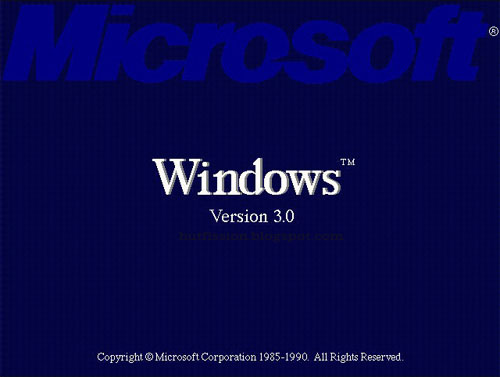Despite the criticism on stability and constantly being compared to their rivals Apple Macintosh, Microsoft Windows is still the most widely used operating systems in the world. In this article, we’ll bring you back to 1985 where the very first official Microsoft Windows 1.0 was announced, and then we take a trip down memory lane to see all boot screens and desktop interface of all Windows operating system possible.
Officially released on November 20, 1985, this 16-bit OS that cost less than 1MB in overall is Microsoft’s very first operating system that allows multi tasking with graphical user interface on PC platform that runs on MS-DOS 5.0.
Windows 1.03 (1986) :
Introduced in 1986, Windows 1.03 is an upgrade to its previous predecessor Windows 1.01. Entire operating system cost about 2.2Mb hard disk space.
Windows 2.03 (1987) :
Taking advantage of the speed of Intel 286/386 processor at that time, Windows 2.03 is a replacement for Windows 1.x. It also starts the era where users are able to overlap windows, customize screens, etc. Still the entire operating system cost no more than 2.5Mb.
Windows 3.0 (1990) :
This is the third major released of Microsoft Windows with a improved set of Windows icons and applications like File Manager, Program Manager that is still being used in today’s Windows. This 22 May 1990 released operating system is then replaced by Windows 3.1 two years later.
Windows 3.1 (1992) :
Windows 3.1 is probably the earliest Windows most of us are familiar with. Windows 3.1 and later Windows 3.1x is an upgrade to Windows 3.0 with bug fixes and multimedia support.
Windows NT 3.1 (1993) :
The first Windows New Technology (NT) introduced. It maintains consistency with the Windows 3.1, a well-established home and business operating system at the time, the new Windows NT operating system began with version 3.1. Unlike Windows 3.1, however, Windows NT 3.1 was a 32-bit operating system..
Windows NT 3.51 Workstation (1995) :
The Windows NT Workstation 3.5 release provided the highest degree of protection yet for critical business applications and data. With support for the OpenGL graphics standard, this operating system helped power high-end applications for software development, engineering, financial analysis, scientific, and business-critical tasks – Microsoft.
Windows 95 (1995) :
Previously code-named Chicago, Windows 95 is a successor to all the existing Windows operating system so far. It gives full graphical user interface support, integrated a 32-bit TCP/IP (Transmission Control Protocol/Internet Protocol) stack for built-in Internet support, dial-up networking, and new Plug and Play capabilities that made it easy for users to install hardware and software.
Windows NT 4.0 (1996) :
Windows NT Workstation 4.0 included the popular Windows 95 user interface yet provided improved networking support for easier and more secure access to the Internet and corporate intranets – Microsoft.
Windows 98 (1998) :
Windows 98 was the upgrade from Windows 95. Described as an operating system that "Works Better, Plays Better," Windows 98 was the first version of Windows designed specifically for consumers – Microsoft.
Windows 2000 (2000) :
More than just the upgrade to Windows NT Workstation 4.0, Windows 2000 Professional was also designed to replace Windows 95, Windows 98, and Windows NT Workstation 4.0 on all business desktops and laptops. Built on top of the proven Windows NT Workstation 4.0 code base, Windows 2000 added major improvements in reliability, ease of use, Internet compatibility, and support for mobile computing – Microsoft.
Windows ME (2000) :
Designed for home computer users, Windows Me offered consumers numerous music, video, and home networking enhancements and reliability improvements – Microsoft.
Windows XP (2001) :
Windows XP Professional brings the solid foundation of Windows 2000 to the PC desktop, enhancing reliability, security, and performance. With a fresh visual design, Windows XP Professional includes features for business and advanced home computing, including remote desktop support, an encrypting file system, and system restore and advanced networking features – Microsoft.
Windows Vista (2006) :
It came more than 5 years after it’s predecessor Windows XP, Vista is the longest timeline break for Microsoft between two operating system.
Windows 7 (2009) :
Windows 7 is codenamed Blackcomb, Windows 7 is one of the most anticipated operating system which should be available somewhere in Oct 2009.






























